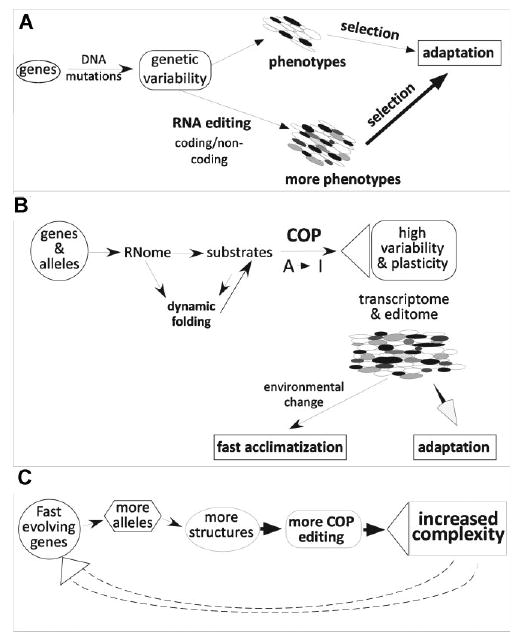Figure 2.

RNA editing and adaptation. A: Schematic describing the basic mechanism for increased genetic variability through post-transcriptional RNA editing. B: Continuous probing (COP) hypothesis. Dynamic folding of RNome causes complex pattern of RNA editing in individual cells through continued probing of RNA structures by the editing machinery. The high variability and plasticity within the phenome allows for fast acclimation after environmental change and facilitates adaptive evolution. C: Feed forward regulation of complexity-generating mechanisms. Genes that evolve faster than others generate a larger number of alleles in the population, which leads to an increased diversity in COP editing due to the larger number of alternative RNA-folds. The resulting increased complexity of the system further feeds into the generation of novel alleles in the population.
